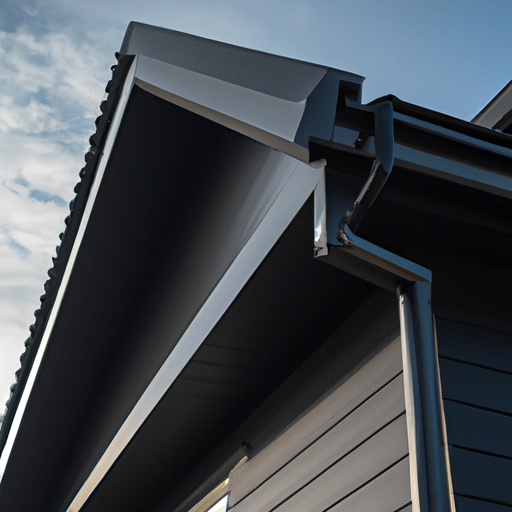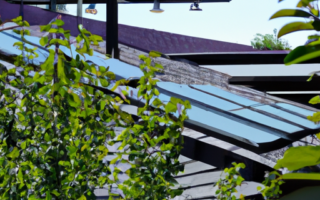Introduction to Advanced Techniques in Roof Construction: A Comprehensive Guide
Introduction to Advanced Techniques in Roof Construction: A Comprehensive Guide
The construction industry has seen significant advancements in roof construction techniques over the years. With a growing emphasis on sustainability, energy efficiency, and resilience, architects and engineers are continuously exploring innovative materials and designs to create more durable, efficient, and aesthetically pleasing roofs.
In this comprehensive guide, we will delve into the world of advanced techniques in roof construction, highlighting the key aspects and benefits of using innovative materials and designs. Whether you are a homeowner planning to renovate your roof or a professional in the construction industry, this guide aims to provide valuable insights into the latest trends and practices.
One of the primary areas of focus when it comes to advanced roof construction techniques is the selection of materials. Traditional roofing materials like asphalt shingles or concrete tiles are being replaced with more sustainable alternatives such as metal roofing, green roofs, and solar panels. These materials not only offer improved durability and longevity but also contribute to energy efficiency and environmental conservation.
Furthermore, the advancement in roofing designs plays a pivotal role in enhancing the overall performance of roofs. Incorporating features like proper insulation, ventilation, and drainage systems can significantly reduce energy consumption, prevent moisture buildup, and increase the lifespan of the roof. Additionally, techniques such as cool roof coatings or reflective surfaces can minimize heat absorption, reducing the cooling needs and costs during hot summer months.
Moreover, advanced techniques in roof construction also include innovative designs that incorporate sustainable practices while adding aesthetic appeal. Living roofs, also known as green roofs, are gaining popularity due to their ability to provide insulation, reduce stormwater runoff, and create green spaces in urban environments. Integrated solar roofing systems are another example of innovative design that combines the benefits of solar energy generation with traditional roofing elements.
In conclusion, as the demand for sustainable and energy-efficient buildings continues to rise, advanced techniques in roof construction are becoming increasingly important. By embracing innovative materials and designs, we can create roofs that not only protect us from the elements but also contribute to a greener and more resilient future. Whether it’s utilizing new roofing materials, optimizing designs for better energy efficiency, or incorporating sustainable practices, the possibilities of advanced roof construction techniques are endless.
Exploring Innovative Materials for Sustainable Roof Design: A Look into the Future
Exploring innovative materials for sustainable roof design is a crucial aspect of advanced techniques in roof construction. With the growing importance of sustainability and environmental consciousness, architects and engineers are constantly seeking new materials and designs that are both aesthetically pleasing and environmentally friendly.
One of the emerging trends in sustainable roof design is the use of green roofs, also known as living roofs or eco-roofs. These roofs incorporate vegetation, such as grass or plants, on the roof surface, providing numerous benefits. Green roofs help reduce urban heat island effect, improve air quality, and increase biodiversity in urban areas. In addition, they provide natural insulation, reducing energy consumption for heating and cooling, and improve stormwater management by absorbing rainwater.
Several innovative materials are being explored for green roof construction. One such material is recycled rubber, which can be used as a base layer or as a component of the roofing system. Recycled rubber is highly durable, water-resistant, and provides excellent insulation. It is also a sustainable alternative to traditional roofing materials, as it utilizes rubber waste that would otherwise end up in landfills.
Another exciting material for sustainable roof design is solar roof tiles. These tiles integrate photovoltaic cells into the roofing material, allowing for the generation of electricity from the sun’s energy. Solar roof tiles are a great way to harness renewable energy and reduce reliance on traditional energy sources. They offer a clean and efficient solution for powering homes and buildings, while also providing the necessary protection and durability of a roof.
Furthermore, designers are exploring the use of bio-based materials for sustainable roof construction. These materials are derived from renewable resources, such as agricultural waste, corn, or bamboo. Bio-based materials offer excellent thermal insulation properties and help reduce the carbon footprint associated with traditional construction materials. They are also biodegradable and do not release harmful chemicals during their lifecycle.
As technology progresses, there is a growing interest in the integration of smart materials and sensors into roof design. Smart materials can adapt to changing environmental conditions, such as temperature and moisture, providing enhanced energy efficiency and comfort. Sensors embedded in the roofing system can monitor various parameters, such as humidity levels or structural integrity, allowing for proactive maintenance and early detection of potential issues.
In conclusion, exploring innovative materials for sustainable roof design is an essential part of advanced techniques in roof construction. Green roofs, recycled rubber, solar roof tiles, bio-based materials, and smart materials all contribute to creating environmentally conscious roof designs that are both functional and visually appealing. As the demand for sustainable buildings continues to rise, architects and designers must continue to explore and implement these innovative materials and designs for a greener future.
Pushing the Boundaries of Roof Construction: Cutting-Edge Technologies and Techniques
Pushing the boundaries of roof construction has become an increasingly important goal in the building industry. As technology advances, new materials and techniques are emerging that allow architects and builders to create roofs that are not only visually appealing but also highly functional and durable.
One area where significant progress has been made is in the development of innovative materials for roof construction. Traditional materials like asphalt shingles and clay tiles are now being replaced with more modern options such as metal panels, synthetic membranes, and photovoltaic cells.
Metal panels, for example, offer excellent durability and can withstand harsh weather conditions. They come in various shapes and finishes, allowing architects to explore more creative roof designs. Additionally, metal roofs are often more energy-efficient than other options, as they reflect solar heat rather than absorbing it.
Synthetic membranes, on the other hand, provide superior waterproofing and insulation properties. They are commonly used in flat or low-slope roofs and offer a lightweight and flexible alternative to traditional materials. These membranes can be seamlessly installed, reducing the risk of leaks and extending the lifespan of the roof.
Another exciting development in roof construction is the integration of photovoltaic cells. Solar panels, which can generate electricity from sunlight, can now be seamlessly incorporated into the roof design. This not only provides an environmentally friendly energy source but also eliminates the need for separate solar panels mounted on the roof or ground.
In addition to innovative materials, cutting-edge technologies and techniques are also pushing the boundaries of roof construction. One such technology is the use of drones for roof inspections and surveys. Drones equipped with high-resolution cameras can quickly and accurately assess the condition of a roof, identifying potential issues before they become more significant problems.
Furthermore, computer-aided design (CAD) software enables architects to create intricate roof designs with precision and accuracy. These digital models can be shared with builders and engineers, ensuring that the final product matches the intended design. CAD software also allows for the optimization of material usage, reducing waste and saving costs.
As the demand for sustainable and efficient buildings grows, architects and builders are constantly seeking new ways to push the boundaries of roof construction. By embracing innovative materials and leveraging cutting-edge technologies and techniques, the industry can continue to create roofs that are not only aesthetically pleasing but also meet the highest standards of functionality and durability.
The Aesthetics of Modern Roofing: Innovative Designs for Architectural Excellence
The aesthetics of modern roofing play a crucial role in architectural excellence. As advancements in roof construction continue to evolve, innovative designs have emerged that not only prioritize functionality but also contribute to the overall visual appeal of a building.
One of the key aspects of modern roofing design is the use of innovative materials. Traditional roofing materials such as asphalt shingles are being replaced with alternatives that offer better durability and aesthetic appeal. Metal roofing, for example, is gaining popularity due to its sleek and contemporary look. It comes in various colors and finishes, allowing architects and homeowners to choose a design that complements the building’s style.
Another trend in modern roofing design is the integration of sustainable elements. Green roofs, also known as living roofs, have become increasingly popular in recent years. These roofs are covered with vegetation, contributing to increased energy efficiency and environmental sustainability. Not only do green roofs offer a visually appealing aesthetic, but they also provide additional benefits such as insulation and rainwater management.
Flat and low-slope roofs have also undergone significant transformations in modern design. Instead of the traditional flat roof with no distinctive features, architects are now incorporating innovative shapes and angles into their designs. Sloped roofs with unique geometric designs add a sense of architectural interest to a building. These roofs not only enhance the overall aesthetics but also provide practical benefits such as improved water drainage and reduced snow accumulation.
Technological advancements have also played a significant role in modern roofing design. The use of computer-aided design (CAD) software allows architects to experiment with different roofing shapes, materials, and colors. This technology enables precise planning and visualization of the final design, ensuring that the roof seamlessly integrates with the overall architecture.
In conclusion, the aesthetics of modern roofing have taken center stage in the pursuit of architectural excellence. With the use of innovative materials, sustainable elements, unique shapes, and advanced technology, roofs now contribute not only to the functionality of a building but also to its visual appeal. These advancements have opened up new possibilities for architects and homeowners to create stunning and visually captivating roof designs.



